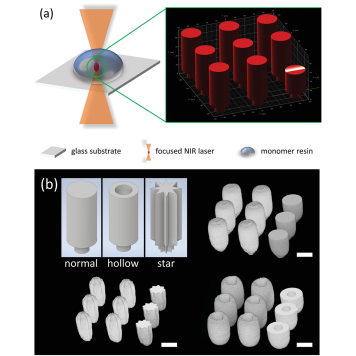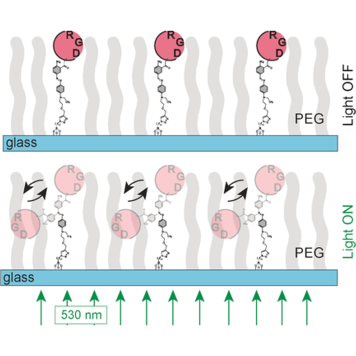AG Selhuber-Unkel Research PHOTOSWITCHABLE AZOBENE-BASED PLATFORM FOR MECHANOTRANSDUCTION
Project Description
Photoswitchable scaffolds are promising platforms for a biophysical understanding of mechanotransduction which allow photomechanical stimulation of cellular proteins at a molecular level. This enables user-defined control of cellular mechanosensing and functions (e.g. cell adhesion and cell differentiation). To address this aspect, we are focused on developing 2D and 3D platforms for cells based on a photoswitchable azobenzene. The reasoning behind this is that azobenzene can under undergo reversible photoisomerization between cis and trans isomers. These platforms enable the use of small forces (~ pN) to investigate probing of mechanical interactions between cellular proteins and photoswitchable azobenzene. Further, these platforms demonstrate the potential for programmable platforms which enable investigation into the dependency of cell adhesion and other cellular properties on stimulation parameters.
When azobenzenes are irradiated by UV light, a more stable trans isomer can be converted to a less stable cis isomer. Such switching is promising for biological applications.



CONTRIBUTORS
- Principal Investigator: Prof. Dr. Christine Selhuber-Unkel
- Postdocs: Dr. Qiyang Jiang, Dr. Zhe Wang
- PhD: Sophie Geiger
- Technical Support: Tanisha Gebert, Benjamin Scherke
- Alumni: Dr. Federico Colombo (Postdoc, current group member), Julien-Maurice Roquette (Master's student, former group member)




